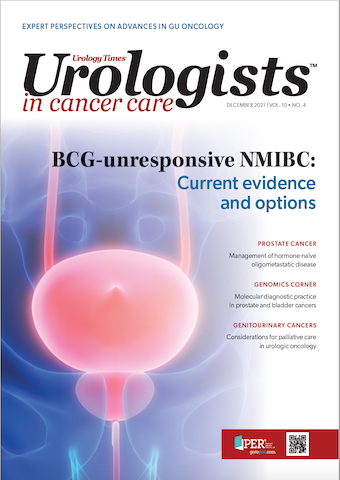Publication
Article
Urology Times Urologists in Cancer Care
The continuum of care in urologic oncology
Author(s):
"The explosion in the number of therapies in this particular disease segment, especially those that have been deemed BCG unresponsive, seems very reminiscent to that witnessed in the mCRPC space a decade ago," writes Raoul S. Concepcion, MD, FACS.
Raoul S. Concepcion, MD, FACS

It has now been a decade when the urology world started to embrace the management of what was then labeled as “hormone resistant” prostate cancer.The flash point for this change was the approval of multiple agents that extended over-all survival and the delivery could be safely administered inside the walls of a urologic practice.However, many obstacles needed to be overcome in order to sway individuals and groups to adopt this non-surgical mentality, which many of us were not adequately trained nor exposed:
- A basic understanding of the role of the androgen receptor and how it drives prostate cancer growth.
- The heterogeneity of prostate cancer and the role of therapeutic layering.
- Small rises in PSA in the setting of continuous ADT and castration levels of testosterone is a harbinger of disease progression.
- With monotherapy, a survival benefit of > 4 months is significant.
For those that were early adopters and quick to overcome these hurdles in a vertically integrated setting, the benefits to both the patient and practice are significant:
- On-going patient retention within the urology practice, given the nature and progression to what we now call castration resistant prostate cancer (CRPC).
- Economic growth and revenue as a result of optimizing delivery of the multiple agents by the urologist.
- Higher patient satisfaction, given the continued ability to be managed by his local urologist where more than likely he has been being closely followed for years for his disease.
Although this management approach to advancing prostate cancer is not applicable to all practices and providers, it has been proven to be a very successful model in certain markets.As we have stated repetitively, the urologist needs to be the gatekeeper of prostate cancer, starting at diagnosis and through the progression of disease that unfortunately many of our patients will have to endure.Our ability to manage and support the needs of our patients, beyond just offering surgical and therapeutic optimization, becomes critical.One area that we will all need to be more aware is the role of palliative care.In this edition, urologic colleague and UCC Editorial Board member Kristen Scarpato, MD, provides a very nice overview on how we need to embrace and incorporate palliative care for our oncologic patients, differentiating from what many of us, me included, had always thought to be hospice care.
And as we are all keenly aware, this leadership approach for disease management is being tested as we see more and more opportunities in the bladder cancer world, both non muscle invasive (NMIBC) and muscle invasive (MIBC).Our success in prostate cancer management can be directly attributed to:
- High volume of cases within a practice.
- Prior exposure to similar type agents (anti-androgens, androgen synthesis inhibitors, radiopharmaceuticals) and their side effect profiles.
- Long standing history with the patient within the practice.
While the number of bladder cancer patients within a given practice is not to the same degree as prostate, NMIBC has always been 100% in the domain of the urologists. The explosion in the number of therapies in this particular disease segment, especially those that have been deemed BCG unresponsive, seems very reminiscent to that witnessed in the mCRPC space a decade ago. While some of the newer agents will be intravesical and therefore easy to deliver by many without changing workflow, the checkpoint inhibitors and immunotherapies present a different speed bump, given the nature of delivery and lack of significant prior experience with these types of targeted agents.The challenge for the urology community will be to similarly embrace and operationalize, just as we did for prostate cancer, these agents in order for us to provide the continuum of care that our patients wish to maintain with their urologist.























